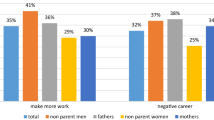Abstract
Firms have increased their reliance on flexible, or temporary, employment. Some of this increase is a normal market response to technological and demographic trends largely beyond the control of public policy. But the trend toward flexible employment is also explained by increased government regulation of labor markets. This regulation has increased the cost of employing permanent workers relative to the cost of employing temporary workers. Of primary importance has been the substitution of regulatory restrictions on hiring and firing for the common law doctrine of employment at will.
Similar content being viewed by others
References
Abraham, Katherine. “Restructuring the Employment Relationship: The Growth of Market Mediated Work Relationships.” InNew Developments in the Labor Market. Katherine Abraham and Robert McKersie, eds. Cambridge, Mass.: MIT Press, 1990: pp. 85–118.
Dertouzos, James N., and Lynn A. Karoly.Labor Market Responses to Employer Liability. Santa Monica, Calif.: Rand, 1992.
Dunlop Commission on the Future of Worker-Management Relations.Report and Recommendations. Washington, D.C.: U.S. Department of Commerce/ U.S. Department of Labor, December 1994.
Epstein, Richard A. “In Defense of the Contract at Will”University of Chicago Law Review 51 (1984): 947–82.
_____.Simple Rules for a Complex World. Cambridge, Mass.: Harvard University Press, 1995.
Handy, Charles.The Age of Unreason. Boston, Mass.: Harvard Business School Press, 1990.
Kesselring, Randall G., and Jeffrey R. Pittman. “Employment-at-Will: An Empirical Analysis.”Journal of Labor Research 14 (Winter 1993): 59–67.
Laird, Karylee, and Nicolas Williams. “Employment Growth in the Temporary Help Supply Industry.”Journal of Labor Research (Forthcoming).
Lee, Dwight R. “Greed and Gravity.”The Freeman 45 (October 1995): 616–17.
Lichtenburg, Frank. “Industrial De-Diversification and its Consequences for Productivity”Journal of Economic Behavior and Organization 18 (August, 1992): 427–38.
Miller, Gary J.Managerial Dilemmas: The Political Economy of Hierarchy. Cambridge: Cambridge University Press, 1992.
Moore, Gordon E. “The Accidental Entrepreneur”Engineering & Science 57 (Summer 1994): 23–30.
Peters, Tom.The Tom Peters Seminar: Crazy Times Call for Crazy Organizations. New York: Vintage Books, 1994.
U.S. Chamber Research Center.1987 Edition, Employee Benefits. Washington, D.C.: USCR, 1987.
U.S. Chamber Research Center.1990 Edition, Employee Benefits. Washington, D.C.: USCR. 1990.
Vedder, Richard, and Lowell Gallaway. “Laws, Litigation and Labor Markets: Some New Evidence.” Report for the Pacific Research Institute for Public Policy, San Francisco, September 1995.
Author information
Authors and Affiliations
Rights and permissions
About this article
Cite this article
Lee, D.R. Why is flexible employment increasing?. Journal of Labor Research 17, 543–553 (1996). https://doi.org/10.1007/BF02685798
Issue Date:
DOI: https://doi.org/10.1007/BF02685798




